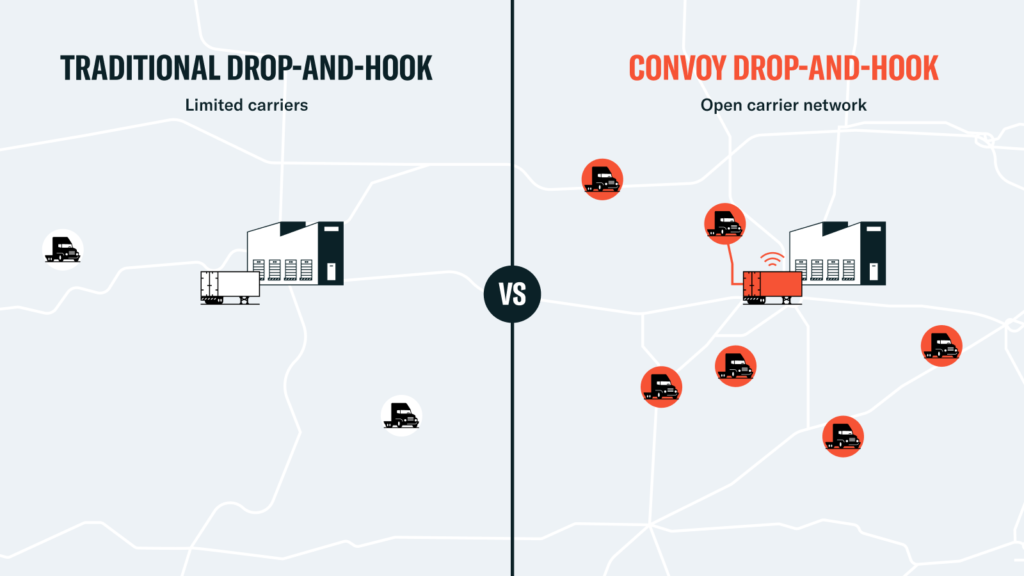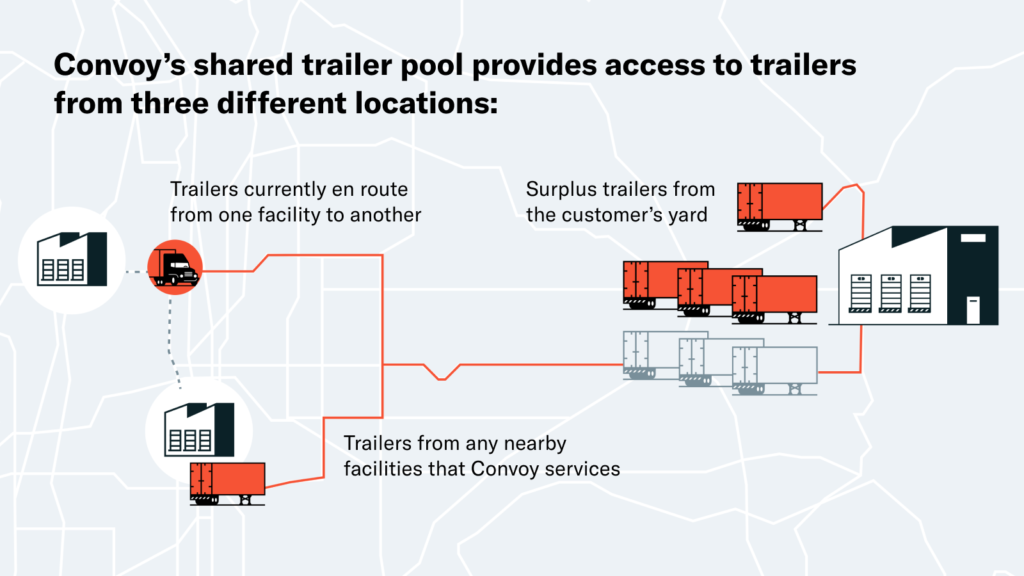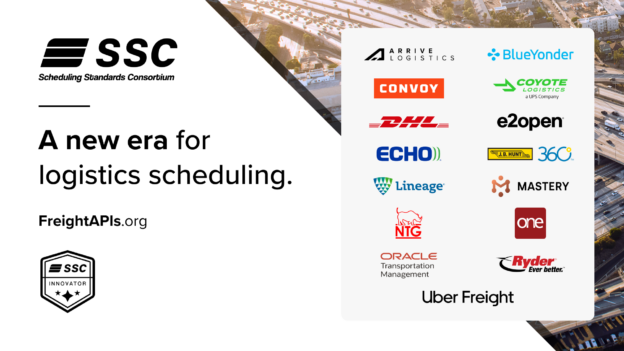What is drop-and-hook freight? 5 common questions answered.
Industry Insights, Shippers • Published on December 10, 2020
What is “drop-and-hook” freight?
“Drop-and-hook” is the trucking industry’s term for when a driver drops a full container at a facility and hooks their tractor to a pre-loaded trailer at the same facility. This grab and go efficiency makes drop-and-hook a win-win: reducing transportation costs for shippers, increasing potential earnings for carriers, and saving time for everyone involved.

How does drop-and-hook compare to live loads?
In trucking, a “live load” is when a driver arrives at a facility, docks with the trailer, and waits for workers to load and/or unload the freight. As the driver waits, detention fees can accrue and increase overall costs for the load.
Compared to drop-and-hook, live loads can require more coordination from the shipper’s transportation team. Incoming and outgoing loads need to operate within scheduled appointment windows so that facility workers are available to move freight on and off trailers. If the schedule falls off track, there’s a heightened risk of facility backups which can increase driver wait times and detention payouts.
While drop-and-hook loads still require coordination and scheduling, they bring more flexibility to shippers’ transportation teams. Facility workers have a much wider time window for loading and unloading trailers. Drop reduces average carrier unload wait times from three hours to under one hour, which in turn results in fewer detention fees paid by shippers.

Can owner-operators haul drop-and-hook loads?
Up until recently, drop-and-hook freight was primarily limited to large asset-based carriers who have the resources to operate a large trailer fleet. However, drop trailer loads are now available carriers of all sizes with Convoy Go, Convoy’s modern drop-and-hook service.
Convoy Go opens access to drop-and-hook loads for owner-operators, carriers with small fleet sizes, and large carriers alike. This unlocks capacity for shippers and new earnings potential for carriers.

Can drop-and-hook services flex up capacity during demand surges?
Historically, one of the biggest drawbacks to drop-and-hook freight was its limited capacity. Traditional drop programs operate efficiently with a fixed fleet of trailers and tractors moving between a designated group of facilities. This limited scope helps drop operate smoothly in soft market conditions, but ill-equipped to adapt to surges in demand.
Convoy addresses this problem with our modern drop-and-hook service that scales to meet demand. We give shippers access to a massive supply of carriers through our digital freight network, providing reliable and flexible capacity that can meet shifting demand.

We also employ a unique shared trailer pool model. This enables us to reallocate drop trailers to a customer facility that needs them, helping shippers flex capacity to meet surging demand.
For example, when one of Convoy’s customers has high demand but low trailer supply at a given facility, we are often able to reroute surplus trailers from nearby facilities that we service. We source power-only tractors in our network to pick up the unused trailers and drop them at the facility where they’re needed.
Our shared trailer pool helps shippers respond to demand without a hitch. Our drop-and-hook service provides customers with a 99.9% equipment availability rate and we deliver empty trailers 24 hours ahead of preload dates 99% of the time.

Are drop-and-hook programs only for large shippers?
Due to the speed, flexibility, and cost savings associated with drop-and-hook, drop programs are especially popular with large shippers. In fact, the majority of US Fortune 500 shipments are sent through preloaded drop trailers. However, you don’t need to be a massive enterprise to reap the benefits of drop-and-hook.
Small and medium-sized businesses can gain access to drop-and-hook with Convoy. We make our drop service available to companies who ship at least 250 truckloads per year on a given lane. You can contact us to learn more about how drop-and-hook can help your business.
Download our free white paper to learn how every shipper can benefit from modern drop-and-hook.



